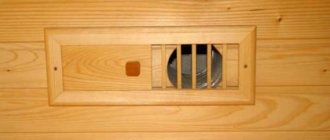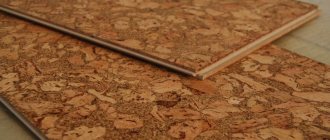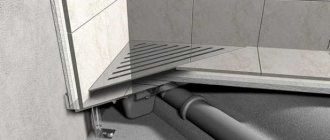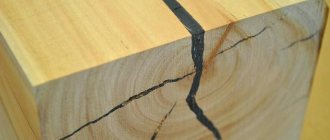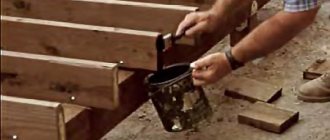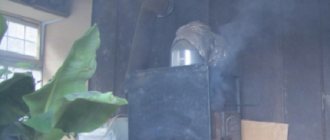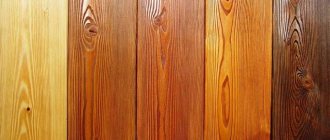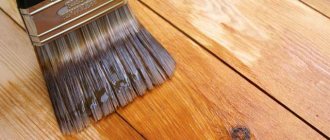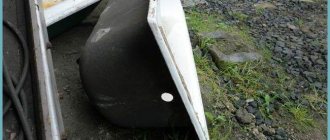A cold floor in a bathhouse is a common problem when using this room. This situation is explained by the extremely unfavorable operating conditions of the coating and, accordingly, of all building materials and architectural structures. The floor is always wet, which increases the thermal conductivity of surfaces. How to fix this problem? Read more below.
Cold floor in the bathhouse, how to fix it
Bathroom floor insulation
Most likely causes
Before looking for a solution to your problem, you need to find out why the floor in your bathhouse is cold. The main reasons for this negative phenomenon can be considered:
- Features of the floor design.
- Lack of necessary thermal insulation pad.
- Poor insulation from moisture of the insulating material.
- Uninsulated floor base in the case of a concrete screed.
Almost all of the problems listed above can be solved relatively easily, with the exception of the case with concrete floors. In the version with a concrete screed, it will no longer be possible to lay insulation under a layer of poured concrete and the entire floor structure will have to be changed, reducing the usable volume of the premises. In other situations, figuring out how to insulate a cold floor in a bathhouse with your own hands will not be so difficult.
Cold floor sources
The culprits of such discomfort:
- First of all, the foundation may be improperly insulated or not at all insulated. The foundation is the basis of the structure and its correct laying affects not only the floor covering, but also the entire structure;
- the boards used for the flooring are not tightly fitted to each other, which causes drafts;
- installing the floor itself too close or below the foundation level;
- a thin layer of insulating material.
Since the bathhouse is mainly built from wooden material, it is most susceptible to the negative influence of various harmful microorganisms, rotting, and mold. There is constant high humidity in the building due to the use of water, the floors do not dry out, and the air temperature in the steam room is elevated.
All this leads to the active development of these factors. You should not lose sight of any bark beetles that are not averse to feasting on wood, thereby causing irreparable damage to the wooden structure.
Based on the above, it is easy to understand why it is cold in the bathhouse and what reasons influence this. It is not only unpleasant to be in such a building, but also dangerous for the human body.
If it's all about the overlap
Some types of floors, called “leaking”, have one feature - they have cracks through which water flows into a drainage drain or directly into the ground. From there, naturally, cold air from the street will enter the room and cool it down. Such a bathhouse has to be heated much more intensely, and it cools down faster. The solution here is not easy and will require a radical rework of the entire ceiling.
You will have to dismantle the existing flooring and carry out a set of works to insulate the base and install a drainage drain isolated from the external environment and the soil. Accordingly, you will have to figure out where the water will flow - it can be directed directly into the ground only in cases where the soil is sandy, and in other cases the space under the building may become swamped. To avoid this, you need to prepare a drainage deck or hole.
The image above shows an example of a floor drain arrangement. After the reconstruction of the ceiling is carried out, you will forget what a cold floor in a bathhouse is and will be able to use it in much more comfortable conditions.
Removing mold from bathhouses
Methods for eliminating mold in a bathhouse are effective when the root causes of its occurrence are eliminated. It occurs most quickly at very high humidity of more than 95%, temperature of more than 20 degrees and, of course, in the absence or poor air ventilation.
Therefore, when deciding what to do if there is mold in the bathhouse, you first need to check the condition of the ventilation system. If necessary, it is cleaned or even redone.
Dirt on the walls and in the corners is also the cause of the appearance and spread of mold. Therefore, the bathhouse premises must be kept clean; the walls themselves cannot be cleaned. Wet cleaning should be carried out after each use of the bathhouse, preferably using regular whitewash.
After all activities have been completed, the bathhouse must be thoroughly dried. And the condition of all premises must be constantly monitored to prevent mold from occurring again.
Wood treatment helps get rid of mold
Dealing with mold with your own hands is quite difficult, but it is possible.
It is important to understand that for all treatments the instructions for using folk remedies must be followed.
First of all, during processing, all ventilation openings must be closed to prevent leakage of sulfur combustion products. Sulfur is placed in a ceramic or metal vessel at the rate of 20 grams per 10 cubic meters of space.
Combustion products, which is sulfur dioxide, are harmful to both mold and human health, so you cannot stay indoors at this time. With the doors tightly closed, the bathhouse should remain in place for 6-9 hours. Then a box of quicklime is placed, which will absorb sulfur dioxide and also dry out the room.
- Bleaching powder.
First, the walls are cleaned of mold. A concentrated solution of bleach and quicklime is made and the areas where mold occurs are treated with this solution. At the same time, work with gloves and a respirator, because the small size of the spores allows them to penetrate the human body through the skin.
- Inkstone.
A solution that is quite gentle on wood, but has a strong effect on mold. The composition of the solution per liter of water is as follows: iron sulfate - 22 g, potassium alum - 44 g, table salt - 18 g. Using a brush, roller or spray, all surfaces are treated.
- In addition, when deciding how to treat a bathhouse against mold, you can use professional preparations, which are offered in a wide range by the industry.
This product can protect you from mold.
Most of these problems can be avoided.
Pine and spruce lumber must be of ideal quality, without a single knot, because basically they are the gateway for the released resin.
Boards with cracks, knots and blue stains are not suitable for a bath.
The material must first be steamed and dried, then the release of resin will be reduced to a minimum.
Pine boards should be selected with almost no defects
You need to carefully inspect all lumber you purchase. A tree affected by fungus or rotten is immediately visible. If you notice specimens that are black or blue, it would be advisable to contact another supplier. There is a high probability that the entire batch is affected, even if the fungus is not noticeable on all the boards and logs.
It is better to buy wood cut down in winter. Frost will prevent fungus from spreading in the wood. And before use and after assembly, wooden elements must be treated with antifungal impregnation.
Fungus on a log cut is immediately visible
Application of impregnations
This remedy can protect you from many problems associated with the operation of the bathhouse. For a modern busy person who does not want to use impregnation, there are only two ways to avoid the appearance of dirt:
- rarely use the bathhouse or allow a small number of people into it (and dry it well each time);
- every two to three years, completely change the furniture, lining on the ceiling and walls (but this method is not suitable for everyone).
Fans of a healthy lifestyle claim that treating wooden surfaces inside a bathhouse is not only unnecessary, but also harmful. They believe that impregnation and paint coatings, when heated, give off a strong chemical odor and emit harmful volatile substances. This is true if you use ordinary products not intended for use in a bathhouse. But if you leave the tree in its original form, it cracks, and fungus multiplies in the cracks and micropores.
Domestic (Senezh, Neomid, Belinka, Aquacolor, Empils, Rogneda) and foreign (Dulux, Tikkurila, Nobel, Belinka, Teknos) manufacturers of varnishes and paints produce many products for interior and exterior impregnation.
Damage or lack of thermal insulation
In this situation, figuring out how to insulate the floor in a bathhouse will be a little more difficult. First you need to understand what is the main source of heat loss - the lack of thermal protection or its violation. If there is a layer of insulation, but it does not perform its function, it may be exposed to moisture. Many heat-insulating materials are very sensitive to water and, when wet, almost completely lose their properties. A complete replacement of the insulation and its high-quality waterproofing will be required.
If the ceiling is assembled incorrectly, the cause of cold may be the lack of a thermal cushion - an air gap between the ground and the insulating material. It should take on the role of an additional shield against the cold, and if there is no gap, then the insulation may be insufficient. The solution to this is not particularly complicated - you need to increase the thickness of the heat-insulating layer or create the necessary gap.
Conclusion
A clean, ventilated room is the key to good rest
Of course, when deciding how to remove mold, you first need to think about the fact that it is easier to prevent its appearance than to remove it after it appears. Simply rinsing will not remove dirt, so you need to wash the sauna regularly and thoroughly. In addition, periodically treat with preventative agents.
Our portal is ready to provide additional information on this issue, which is also contained in the proposed photos and videos in this article.
Difficult situation with concrete
The most difficult case is insulating a concrete floor in a bathhouse. As a rule, tiles or porcelain stoneware are already laid on the screed. At the same time, the height of the premises in such buildings is usually small. Creating a layer of heat-insulating material and then pouring a new screed or installing a coating from other materials is not always possible due to the lack of free space. Not everyone will decide to remove the existing concrete screed either - it is not an easy task.
The simplest and most logical solution here would be to install a “warm floor” system. This can be either a water circuit, if there is a permanent connection to the heating boiler, or infrared films, which can be mounted anywhere and this is easy to do. In any case, you will have to sacrifice a little the height of the walls. However, the installation of such systems will make the coating warm, and being in the building will become much more comfortable.
Cold sauna: contraindications
Almost anyone can use this procedure as long as they feel well. However, there are contraindications for some diseases.
Absolute contraindications:
- pregnancy;
- children under 12 years of age;
- hypertension;
- trophic tissue diseases;
- allergy to cold,
- panic attacks,
- installed pacemaker;
- arterial circulatory disorders,
- bronchial asthma (if an attack occurs as a reaction to cold);
- Raynaud's disease;
- epilepsy;
- diabetes.
Preparing for the session
On the eve of the procedure, some preparation is necessary. Before entering a cold sauna, your entire body, skin and hair must be completely dry. Users should not sweat. Their underwear must be completely dry. Two hours before the session, you cannot visit a regular sauna (bath) or spa.
Three hours before the session, no cream should be applied to the skin. Before the patient enters the cold zone, a screening interview will be conducted and blood pressure will be measured. Its readings should not exceed 130/90 millimeters of mercury. A physical examination prior to your first visit is generally recommended.
In a cold sauna, warm clothing is not required. In contrast, during the cooling process, only the sensitive parts of the body are covered with underwear, socks (perhaps even furry shoes), gloves and a mask. No headgear is needed as the head protrudes from the cryosauna (the machine is adjusted to the height of the visitor before the session begins).
Jewelry and hearing aids should be removed. The procedure is always monitored and can be stopped immediately in case of discomfort or malaise.
